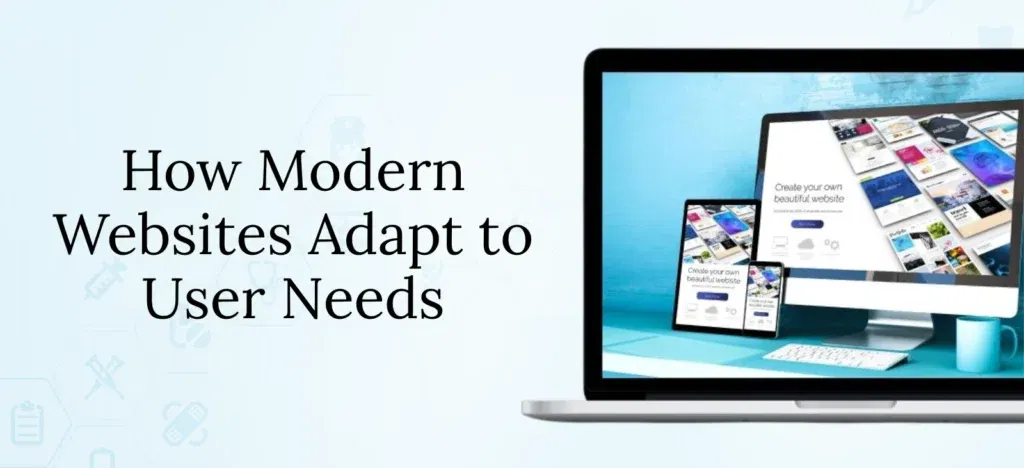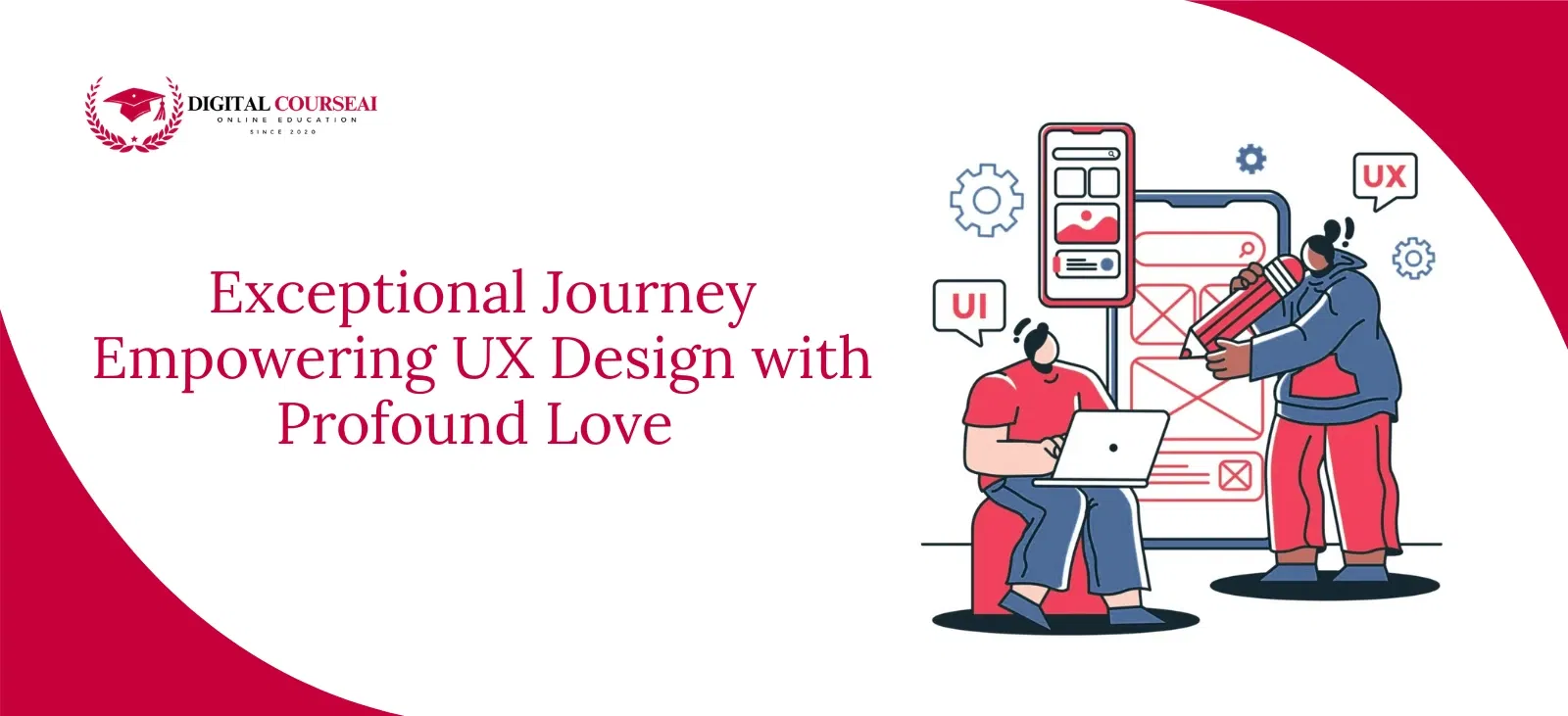Introduction
In our current digital-first age, websites and apps are no longer static experiences. Users expect personalisation, fluid navigation, and interfaces that adapt to their preferences. This is the work of UX design.
Modern UX design utilizes real-time customization of websites. Also, AI personalization creates a strong digital interaction that engages and fosters loyalty.
Let’s look at how personalization is changing digital interactions. Also, it is becoming the central part of the modern web design process.
What Is UX Design and Why Does It Matter?
UX design (User Experience Design) is creating digital experiences. Those are meaningful, valuable, and joyful. UX design is not just the same as designing a website.
A website designer only designs how the website looks and where the content goes. UX design takes into account what the user is feeling, thinking. Also, doing while they are using a digital product.
The role of UX design is to:
- Assist with navigation.
- Reduce friction across the customer journey.
- Personalise content, recommendations, and interactions.
- Provide accessibility and inclusion.
When designed well, UX design helps make websites and apps intuitive. For users, it not only attracts users but also keeps them.
The Rise of Personalization in Digital Products
Users today do not want generic experiences. They want platforms that know them, their preferences, and even their next move. Personalisation has become the norm. This is because sites like Netflix will recommend shows, and Amazon will create a shopping list.
Why personalisation matters in UX design:
Improves user engagement: Users will continue to engage with content. Through is customised to an audience.
Drives conversions: customised product recommendations can increase sales.
Builds trust and loyalty: Offering users personalised touchpoints delivers a sense of value.
This transition marks a shift in customizing websites. From a nice-to-have to a business essential for staying competitive.
How Modern Websites Adapt to User Needs

Improvements in design, methods of web development, and technology. Now, allow websites to change content in real-time to meet user experience design. Several examples are:
1. Dynamic Content Delivery
Websites can adapt their content based on user geolocation and possibly. For example, history or behaviour on the site. Here are a couple of worked examples.
Regional news sites might have regional election headlines. Also, perhaps provide more timely local news.
E-commerce sites might present relevant offers based on the user’s own browsing history.
2. Personalised Navigation
Smart nav tools (specifically) develop and identify related categories. Likewise, subcategories are more relevant to each visitor. In the case of some online shopping, returning visitors. It might go straight to “Recently Viewed” or “Recommended For You”.
3. AI-Powered Recommendations
AI personalisation enables websites to engage to some extent with the user’s needs. Curated playlists on Spotify. For example, these are examples of algorithms. That is tied specifically to how the user listens.
4. Customised Design Themes
Some sites let the user select colours, font sizes, or themes. These options increase accessibility but also allow users to solve their own issues. Adding a level of satisfaction to give users control over their experience.
The Role of AI Personalization in UX Design
Not only is “artificial intelligence” enhancing personalisation on a scale never achieved before. But it is also allowing websites and apps to deliver experiences. They learn and evolve as the user engages and interacts.
Examples of AI in personalisation:
- E-commerce: Recommending products based on browsing behaviours.
- Streaming services: Provide curated suggestions based on the user’s previous service usage for podcasts, shows, movies, and playlists.
- Finance apps: Based on the user’s average spending, list and give insight into the user’s spending habits.
Benefits of AI-driven UX design:
- Provides the ability to get a snapshot of user behaviours and demographics live and in real time.
- Exponential scalability.
- Accuracy of predicted user preferences.
AI enables personalization that is dynamic and intelligent versus static and prescriptive.
Customizing Websites for Different Users
Personalising websites is not strictly adding a recommendation widget to the website. This means remapping experiences for certain segments of users.
Key customisation strategies:
Segmentation: Make several different content options aimed at. At different segments of your audience (i.e., students, professionals, or families).
Localisation: Changing your usual website language, culture, currency, etc.
Accessibility: Create the website in a manner that allows users with visual or physical disabilities. The best experience using screen readers, text-to-speech, colour contrast, etc.
Behaviour-based triggers: Offering discounts for first-time visitors. Also, upselling existing customers on repeat visits.
The point here is to give the user the feeling a website was designed specifically for them.
The Psychology Behind Personalized User Experience
The rationale of personalisation is built on basic human psychology.
Relevance: Users like it when they receive information that is relevant to them.
Recognition: Users feel appreciated when platforms “remember” prior incursions.
Convenience: personalisation is a way to improve the user journey. Also, create speed by providing links in a responsive, relevant, and timely manner.
Trust: Personalisation has authenticity, enhancing the human aspect of user experience.
Ultimately, user experience design is about a feeling of emotional satisfaction. Rather than merely functional efficiency.
Challenges of Personalizing UX
There is a lot of value and power in personalising user experience design, but it also has its challenges:
Privacy concerns: It is essential to gather data and to be engaged with your users.
Over-personalisation: It could limit users’ capacity for exploration or seem like stalking.
Technical complexity: You need advanced technology and talent to build experiences. That uses real-time inputs to provide personalisation.
Scalability: Finding a happy medium between building thousands of personal experiences. For thousands of consumers, maintaining performance is incredibly challenging.
Organizations need to find that happy medium. Between personalization and allowing users enough autonomy.
Best Practices for Implementing Personalized UX Design
Here are a few best practices you can use to successfully include personalisation on sites and in apps:
- Start Small: Start with simple personalisation efforts. For example, simple website location-based recommendations, and then grow it.
- Prioritise Privacy: You have to be upfront with people. In general, how you collect their personal data and how you will use it.
- Balance Control: Give a user the power to select a custom experience.
- Test and Iterate: Use user feedback to learn ways to improve personalisation.
- Leverage AI Thoughtfully: Use AI personalization to support the human experience. Do not take it away.
To master these practices, consider taking a UI/UX design course in Gurgaon with Digital CourseAi.
Future of Personalized UX
The future of UX lies in hyper-personalisation. This emanates from AI, machine learning, and predictive analytics. For example, we want to see:
- Websites that respond to user changes and moods in real time.
- Applications that solve problems for the user before they can see that they are problems.
- Users will feel unbroken, seamless connections that maintain personalisation across devices.
If we realize these technological advances, personalization. It will not just be a feature; it will be a starting point for digital design meaning.
Conclusion: The Future is Personal
In a world where digital experience influences brand perception. As well as that, personalization is not a “nice to have”. It is understanding UX design as a way to customize. The experience websites provide, along with consulting AI personalization. As a vehicle to enhance UX exploration and conclude by being thoughtful. About the website design to ensure individual interactions. Do not become so personal that they are not valuable and engaging to each user.
Today’s users expect websites and apps to be customized to how they see and require information. Organizations that acknowledge and plan for this future will have an advantage. In the increasingly competitive world of user experience.
Also Read: Create a Winning Data Science Portfolio for Your Next Job

